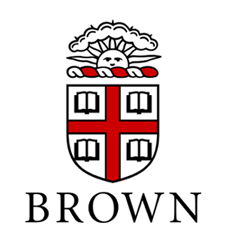Biographical note
Alpheus Spring Packard (1839-1905), professor of zoology and geology, was born in Brunswick, Maine, on February 19, 1839. His father of the same name was a professor of classics at Bowdoin College. As a child, young Alpheus, called "Alpha," collected insects, minerals, and shells, and had his own herbarium before he went to college. He graduated from Bowdoin in 1861. During the next three years he pursued two educational paths, described thus in the triennial report of his class at Bowdoin: "He attended the lectures at Maine Medical School during the session of '62, '63, '64 receiving the MD degree the present year. During the remainder of the years '62 and '63 he attended the Cambridge Scientific School acting as assistant to Professor Agassiz." The "Cambridge Scientific School" was the Lawrence Scientific School at Harvard, where Packard went in 1861 to study with Agassiz, earning his tuition by taking care of insects, and other funds by working in the museum. He received a bachelor of science degree from the school in 1864. He also took drawing lessons at the Lowell Institute of Design and attended the "clinique of surgery" for two or three hours on Saturdays. He fulfilled the required professional study with a practitioner of medicine under the direction of John Dunlap Lincoln of Bowdoin. There was some difficulty accomplishing all this at the same time and tranferring credits toward his medical degree. In February 1864, he wrote to his father, "I shall have to defer finishing my medical studies, though I very much want the degree. Could I not get it conferred on me by a little maneuvering on your part. You see I shall be on service during the spring months. I have been quite a regular attendant at the Surgical Clinique and am reading some every day." In the summer of 1860 he took part in the Williams College expedition to Labrador, and in 1864 he joined the expedition of marine artist William Bradford. He wrote of these two journeys in The Labrador Coast. A Journal of Two Summer Cruises to that Region in 1891.
After serving as assistant surgeon of the First Maine Veteran Volunteers during the Civil War, he became librarian and custodian of the Boston Society of Natural History in 1865 and curator of the Essex Institute in 1866. From 1867 to 1878 he was curator and then director of the Peabody Academy of Science. Meanwhile, he was state entomologist of Massachusetts from 1871 to 1873 and a member of the United States Entomological Commission from 1877 to 1882. He came to Brown as professor of geology and zoology in 1878. He was an early champion of Darwin and evolution. He was one of the founders and for twenty years editor-in-chief of the American Naturalist, and wrote "the first practical book on American entomology." He was the author of more than four hundred monographs and notes in geology, paleontology, and zoology. He published Text-Book of Entymology in 1898. In 1872 he was elected a member of the National Academy of Sciences. He gained international recognition in his field, as evidenced by his election in 1872 to the Imperial Zoological-Botanical Society of Vienna, in 1875 to the Société Royale des Sciences de Liègge, Belgium, in 1891 to the Society of Friends of Natural Science of Moscow, and in 1901 to the Linnaen Society of London. In 1899 he was named honorary president of the Zoological Congress in Paris. He died of blood poisoning on February 14, 1905 in Providence.
The above entry appears in Encyclopedia Brunoniana by Martha Mitchell, copyright 1993 by the Brown University Library.


